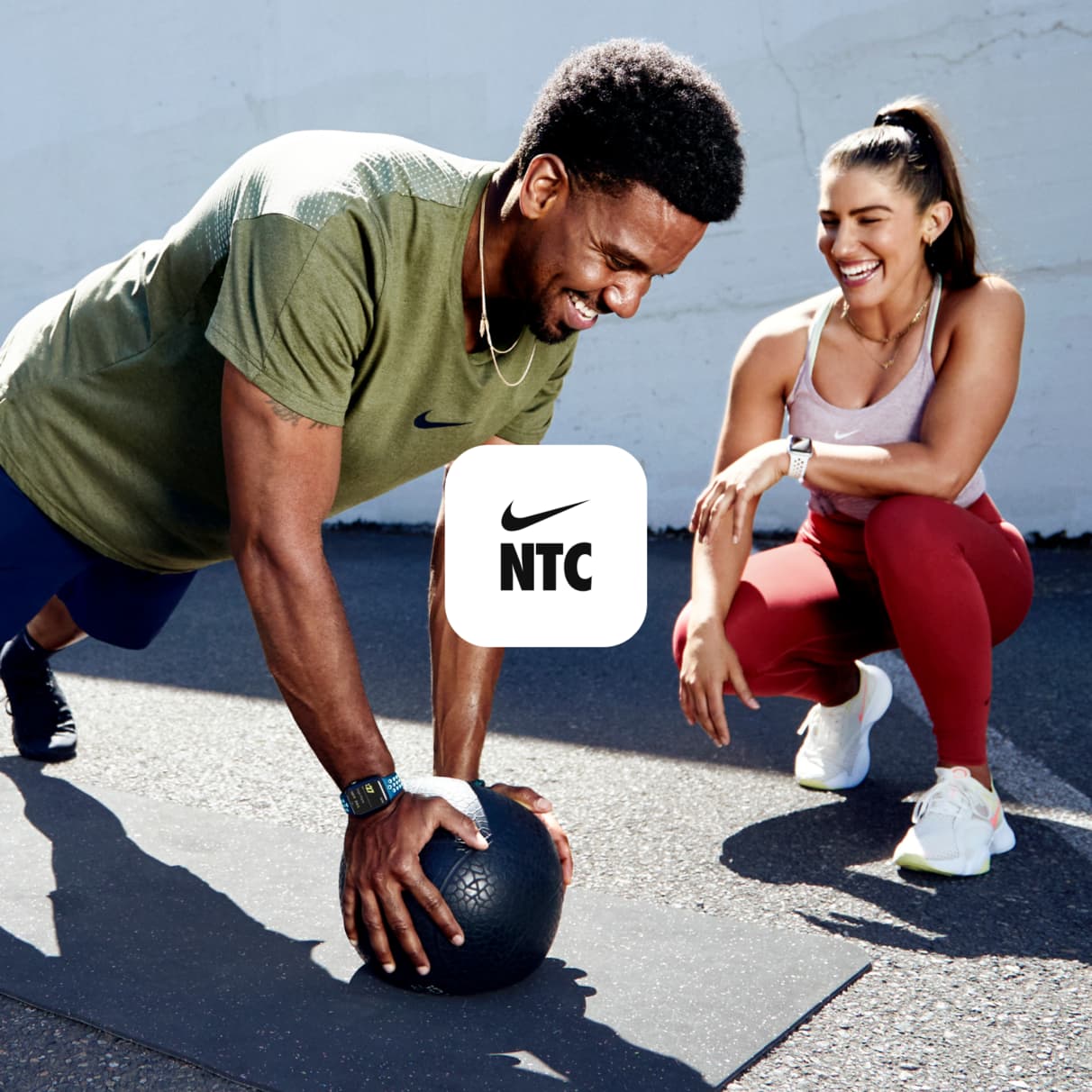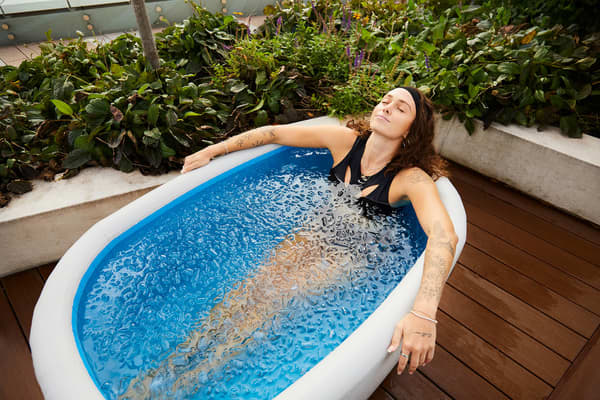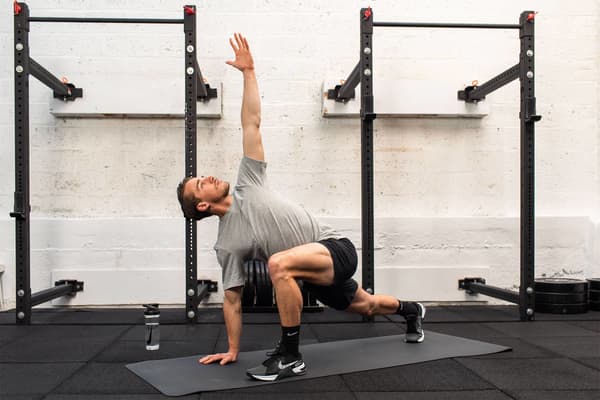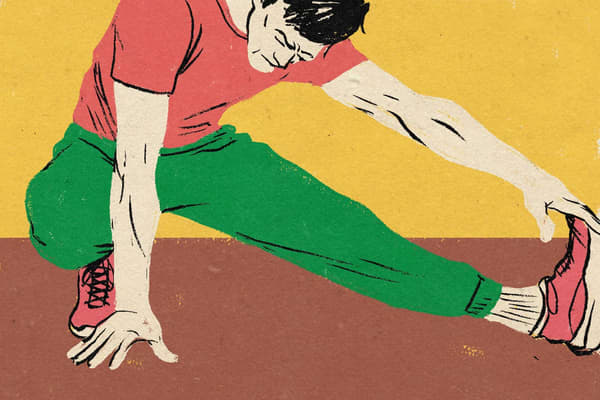Should you work out when you're sore?
Sport & activity
Experts explain why muscle soreness occurs in the first place and provide tips on how to promote proper recovery.

When it comes to working out, if you subscribe to the theory, "No pain, no gain",—even when you're super sore—you might be walking the line between major gains and potential injuries.
Soreness isn't always a cause for alarm. It's actually very common—especially after an intense workout. Still, there's a delicate balance between when to add more reps and when to cross-train or take a rest day. Working out when you're sore won't necessarily contribute to further soreness, as long as you identify the difference between muscular soreness and injury-related pain. It's also important to know how to help your body recover when bouts of soreness set in.
One thing is for sure: soreness shouldn't be used as a benchmark of progress, but rather an important signal from your body that should be taken into consideration when planning future workouts.
Why do you get sore from working out?
One of the most common types of soreness that newbies and veterans alike experience when working out is known as delayed onset muscle soreness (DOMS), which typically can appear a few days after a workout. This is different from acute soreness, which you might experience during a workout due to muscle fatigue that goes away within the hour or once exercise has stopped.
Nick DiSarro, PT, DPT, OCS, CEAS and a board-certified clinical specialist in orthopaedic physiotherapy, admits that current research doesn't fully explain why DOMS occurs. He explains it's probably due to a combination of factors including inflammation and microscopic muscle tears. Gone are the days when it was thought that DOMS occurred because of lactic acid build-up, recent research suggests.
An important truth, however, is that soreness shouldn't be a gauge for how successful your workout was. "Soreness does not automatically indicate an effective workout, nor does it mean you overdid it or did something wrong", DiSarro said. "It really all depends on how you feel and what's tolerable for you".
(Related: Trying to build lean muscle? Follow this advice)
Megan Steele, DPT, an exercise physiologist, physiotherapist and adjunct faculty member at Mount Saint Mary's University, added that exercise-induced muscle damage most often occurs during the eccentric phase of an exercise—like when you lower into a squat. It's during these types of movements that you might be more susceptible to experiencing soreness, post-workout. Ever had to go down a flight of stairs after leg day? It's like that.
"Soreness occurs with exercise due to the minor muscle damage, also called exercise-induced muscle damage, and the associated inflammatory process that occurs due to the mechanical overload of the muscles. This pain is often more dull and achy in nature and often spans the length of the muscle", Steele said. "These are normal signs of soreness".

How can you tell if you're injured or just sore?
If it's common to feel sore after a big workout, how can you differentiate between standard achiness and a bigger injury? Note, if you still feel sore after a recovery or cross-training session (such as a light bike ride), that could indicate that you need a rest day. There are some common signs that you're experiencing standard muscle-related soreness rather than injuries. Some of these signs include soreness dissipating after 72 hours and no pain felt when at rest.
One of the top telltale signs that you're experiencing DOMS rather than something more serious is that there is a delayed onset of any muscle soreness. If soreness is experienced in the days following a workout, you can probably chalk it up to a bout of DOMS.
"You can rest assured if you experience a delayed onset in the soreness", DiSarro said. "This discomfort can set in anywhere between 24–72 hours, [even] after not feeling any soreness for about 12–24 hours following your workout".
However, if you're unsure about the discomfort you're experiencing, it's always best to err on the side of caution and take a rest day or check in with a doctor or comparable licensed professional.
If you decide to hit the gym while still feeling discomfort, consider working with a physiotherapist or certified trainer (some staff in gyms offer tips without having to book a full session) to target various muscle groups that might be less impacted by DOMS. Or, a professional may encourage participating in light stretching and bodyweight movements.
And, don't be surprised if you're sore in areas you didn't target in your workout. Steele noted that you may notice your core or glutes are sore even if your workout focused on your legs. If your soreness is accompanied by any sharp or shooting pain (either during or post-exercise), Steele said that this could be an indication that something more than just DOMS is going on.
While some creakiness is common with muscle soreness, feeling acute discomfort when you're at rest might be a signal that it's time to check in with your doctor. Normal soreness after exercise is felt when engaging in eccentric movements that affect fatigued muscles—think: experiencing quad soreness as you go to sit down.
"Some [abnormal] signs of soreness may be pain at rest or when we're not using our muscles or asking them to contract", Steele said.
Bear in mind that dull aches can be felt in bone injuries, too—not just muscle soreness. Make sure you speak to your doctor or sports physician about any discomfort you may be experiencing.

How can you alleviate soreness after a workout?
Because soreness is often a normal part of exercise, the key is to emphasise recovery. DiSarro explained that this is because soreness is "a sign that you are challenging your muscle tissue".
Research has been inconclusive on the exact recovery programme to alleviate DOMS. DiSarro said that good nutrition, adequate hydration and sleep quality will help your muscles recover and continue to perform in the long term.
"Generally, if you are new to working out or getting back to it after a period of inactivity, you should allow for adequate recovery time between workouts", DiSarro said. "This may be in the form of working on mobility, stretching, walking, light cardio or strengthening a different body region as you recover from the previous workout".
A small study of eight participants found foam rolling to be beneficial in reducing DOMS, a common method that Steele recommends to her patients. Some evidence suggests that a massage can be an effective method to reduce DOMS; however, different research suggests otherwise.
In addition to foam rolling, tackling light movement, if it feels doable, might be an avenue to explore, too. "When you're sore, it's best to perform light range-of-motion movements to target the affected area", said Todd Buckingham, PhD, exercise physiologist and visiting professor of exercise science at Grand Valley State University in Michigan. Gentle movement increases blood flow to sore muscles. "This, in part, can help clear muscle tissues of metabolic by-products from exercise that contribute to soreness", he explained.
Doing gentle movements also helps to alleviate joint stiffness and muscle tightness that's common post-workout. For example, performing a few sets of gentle bodyweight squats and lunges can help loosen tight legs and hips and boost recovery the day after a brutal lower-body gym session.
Is it safe to work out when you're sore?
The short answer: yes, provided your soreness doesn't hinder your form so much that you can't perform the movements correctly—and safely. "Soreness could limit your range of motion in an exercise, causing overcompensation or stress on other structures", Steele said.
Sore muscles are damaged muscles, and working damaged muscles can increase overuse injury risk. "The muscles are already in a weakened state, so exercise may not be possible with proper form, which could lead to injury", Buckingham said.
A rare, albeit more severe, risk of exercising while sore is exercise-induced rhabdomyolysis (rhabdo), a potentially life-threatening medical disorder that can result from overexercising. As Buckingham explained, rhabdo occurs when muscle tissues incur excessive breakdown, leading muscle proteins to leak into the bloodstream, where they can damage the heart and kidneys.
While uncommon, exercise-induced rhabdo has been reported in beginners, marathon runners and professional athletes, per the Centers for Disease Control and Prevention. Common symptoms of rhabdo include dark brown urine and severe muscle pain, weakness, swelling and bruising. It's vital to seek medical care immediately if you notice any of these symptoms.
To lower your risk of overuse injury and rhabdo, give sore muscles time to recover before targeting them again.
Words by Ashley Lauretta and Lauren Bedosky





